If you’ve ever browsed through hair extensions, wigs, or braiding hair, you’ve probably seen numbers like 1, 1B, 2, or 1B/30 on product labels. Among these shades, 1B hair color is the most popular and widely used because of its natural appearance. How about other color codes? How to choose between 1b, 1 and 2 hair color for yourself?
Choosing the right hair color or hair extensions starts with understanding the subtle differences between popular shades. In this guide, GoviHair will break down the key distinctions between 1B hair color vs other shades to help you find the perfect match for your natural hair tone or desired look.
Let’s dive into the breakdown, from color charts to haircare tips.
What Is 1B Hair Color?
1B hair color refers to natural black hair, the kind of black that most people with dark hair are born with. It’s not dyed, overly shiny, or jet black. Instead, 1B has soft brown undertones that give it a realistic finish, perfect for blending with your natural roots.
It’s the standard default color for unprocessed human hair bundles, wigs, clip-ins, and braids because of its universal compatibility with naturally dark hair.
Key Traits of 1B Hair Color:
- Slightly lighter than jet black
- Soft brown or neutral undertones
- Natural, matte finish (not glossy or dyed-looking)
- Ideal for blending with African American natural hair
- Common in raw and virgin human hair products
- Most popular choice for realistic installs and leave-outs
This combination of realism, flexibility, and easy blending is what makes 1B the most trusted base color in hair extensions and protective styles.
To make shopping easier, here’s a simplified 1B hair color chart:
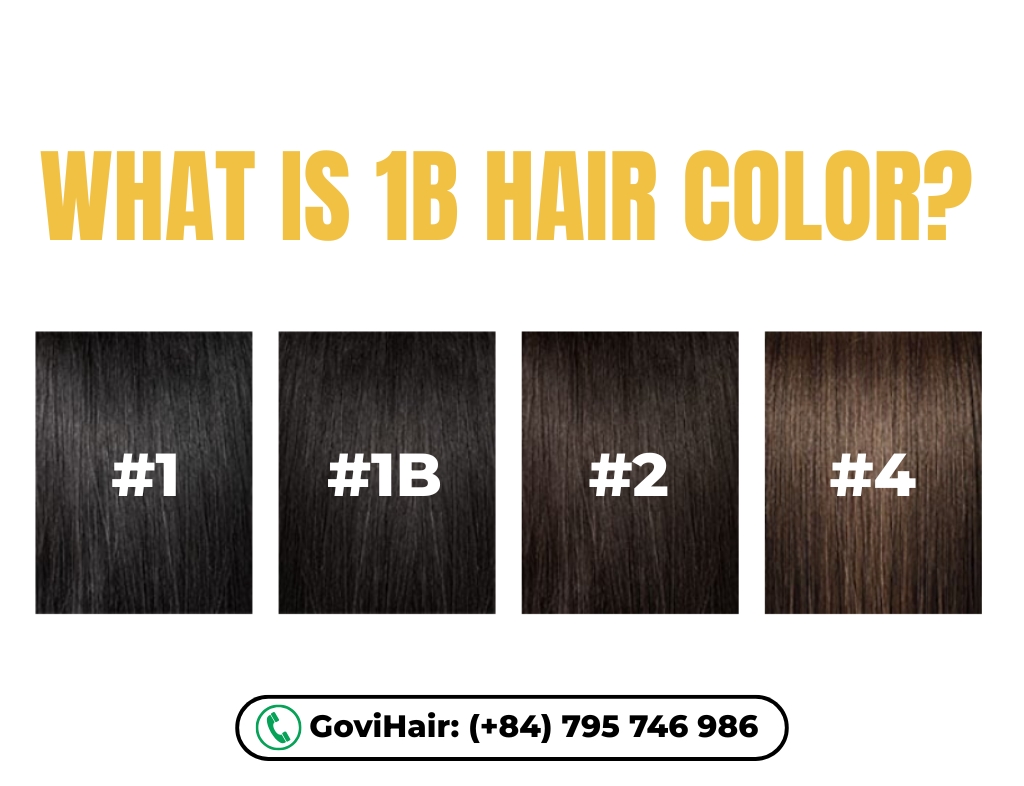
Shop Now: 1B Hair Color Collection
What Is 1B/30 Hair Color?
Now that you understand 1B, let’s talk about color blends. 1B/30 hair color is a popular highlight or ombré style that blends:
- 1B (natural black) as the base
- 30 (light auburn/caramel brown) as the highlight
This combo gives you the depth of black with warm, golden-brown highlights. It’s perfect for braids, wigs, and sew-ins when you want a pop of color without bleaching your natural hair.
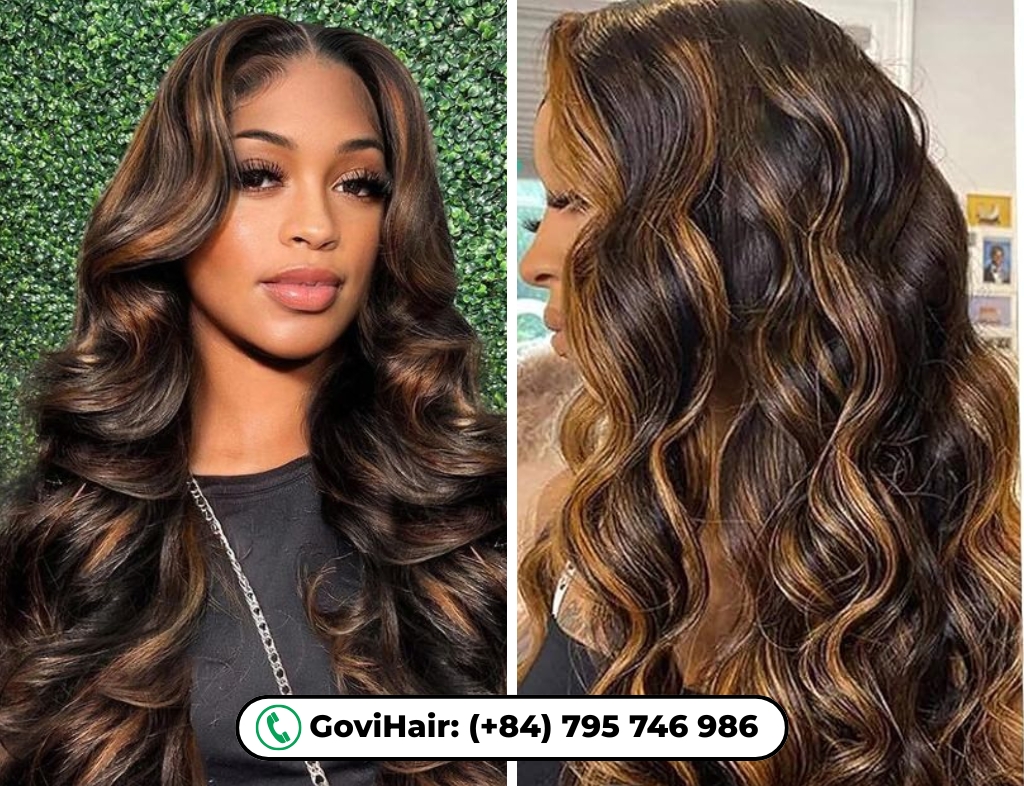
What Is 1 Hair Color? What is the difference between 1B and 1 color?
Many people confuse color 1 (jet black) and 1B (natural black) because they’re both very dark, but they serve distinct aesthetic purposes and deliver different vibes.
1B hair color is more subtle and natural. It’s slightly lighter than jet black and has neutral to soft brown undertones. The finish is matte or satin, not overly shiny, which makes it look more like unprocessed, natural hair. 1B is perfect for everyday wear, especially when you’re trying to blend your extensions, wigs, or leave-out with your own hair.
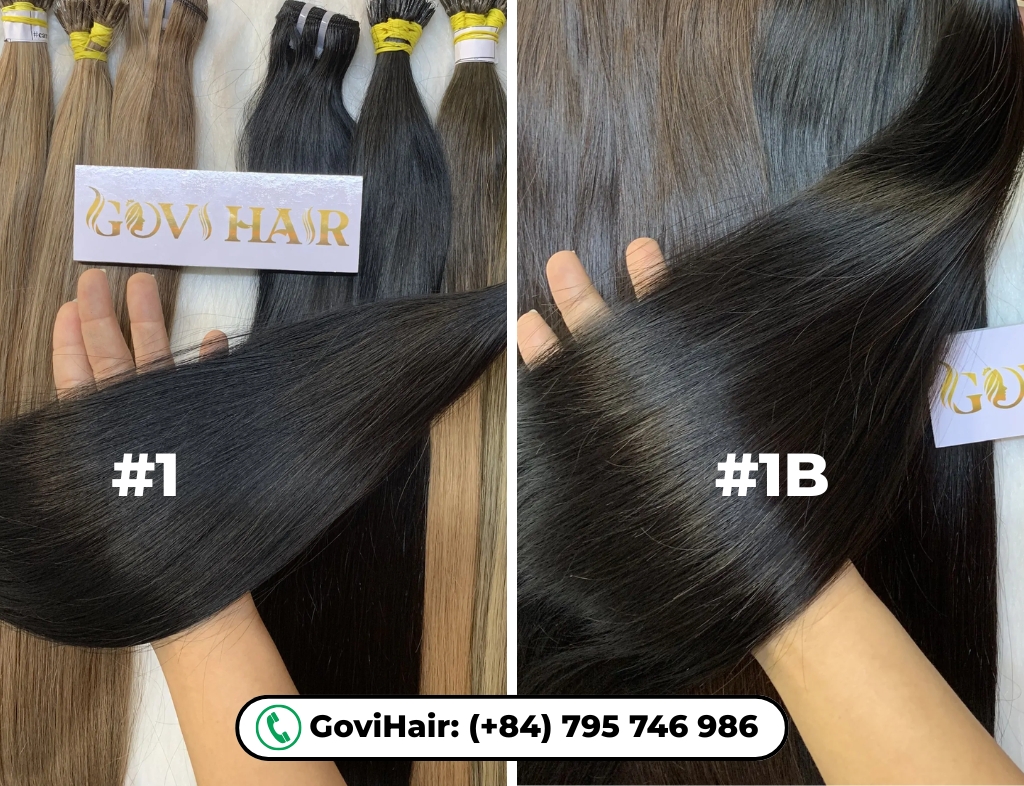
In contrast, color 1 is the darkest black available. It has a cool, almost blue undertone that gives it a very sleek, bold, and polished look. The finish is ultra-glossy, almost as if the hair has been freshly dyed. This makes it ideal for high-impact, dramatic styles like sleek ponytails, blunt bobs, or edgy pixie cuts.
So, if you want a bold and polished look, go with color 1. But if you prefer a realistic and effortlessly natural vibe, 1B is the better choice.
What Is Number 2 Hair Color? How Is It Different From 1B And 2 Hair Color ?
Choosing between 1B (natural black) and 2 (dark brown) can be tricky, especially since both fall within the darker hair color spectrum, but their visual effects are noticeably different.
1B hair color is a neutral black with soft brown undertones. It’s slightly lighter than jet black but still reads as black to the eye. It blends seamlessly with most naturally dark or unprocessed black hair, making it the go-to option for leave-outs, sew-ins, and wigs that need to look effortlessly real. It may reveal subtle brown hints in natural light, but it will still appear very close to black.

On the other hand, color 2 is a rich dark brown with warm, slightly red or golden undertones. It’s visibly lighter than 1B, especially under direct light, and tends to stand out more on darker skin tones. Color 2 pairs beautifully with medium to dark brown natural hair, and it’s ideal if you’re looking for a softer, warmer look that still feels dark and elegant.
For your question: “Should I get 1B or 2?”, the answer is that if you want something that feels close to black but not quite as deep, go for 1B. But if you’re leaning toward a warmer, chocolate-toned style with more dimension, then color 2 might be the better match.
How to Choose Between 1B, 1, and 2 Hair Color for Yourself
So, you’re staring at a hair color chart and wondering, which number is right for me? The answer depends on your natural hair shade, the style you’re going for, and how you want the final look to blend or pop.
If you love bold, high-drama styles with a sleek, polished finish, color 1 is your go-to. It’s ideal for people whose natural hair is dyed black or for those going for wigs and weaves that are meant to stand out, think ultra-sleek ponytails, blunt bobs, or editorial-style looks.
Color 1B is perfect if your hair is naturally black but not dyed. It’s the best option for blending with leave-out or natural roots because it offers a more realistic, unprocessed finish. If you’re unsure which to pick and want the safest match with natural dark hair, 1B is your best bet.
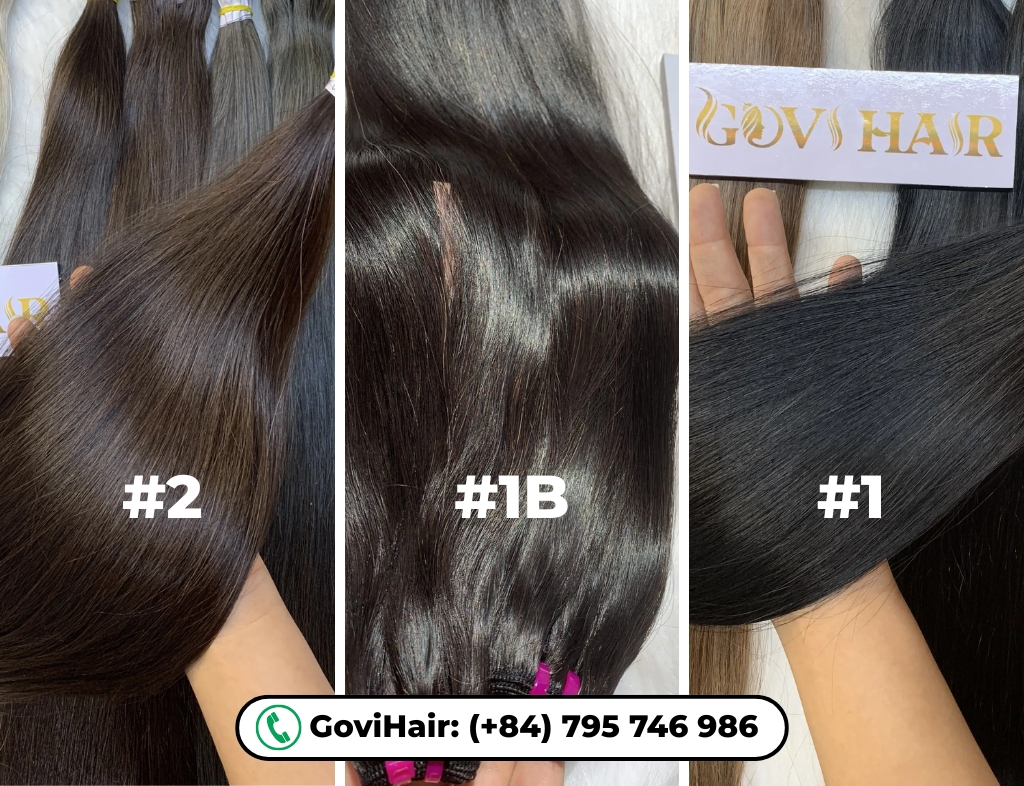
Now, if your natural hair leans more toward brown or dark brown, or if you prefer a warmer and softer tone, then color 2 will be the most flattering. It’s especially great for styles like crochet braids, clip-ins, or extensions where a touch of warmth can add dimension and softness.
When in doubt, always lean toward 1B. It’s the most forgiving and tends to blend beautifully with a wide range of naturally dark hair shades.
What Color Is 1B and 4?
When you compare 1B and 4, you’re looking at two very different shades that can complement each other beautifully in certain styles but also stand apart clearly.
1B hair color is a natural black, meaning it’s the closest to what unprocessed, dark human hair looks like. It has subtle brown undertones and a soft, realistic finish, making it the go-to base for sew-ins, leave-outs, wigs, and braids that need to match natural roots.
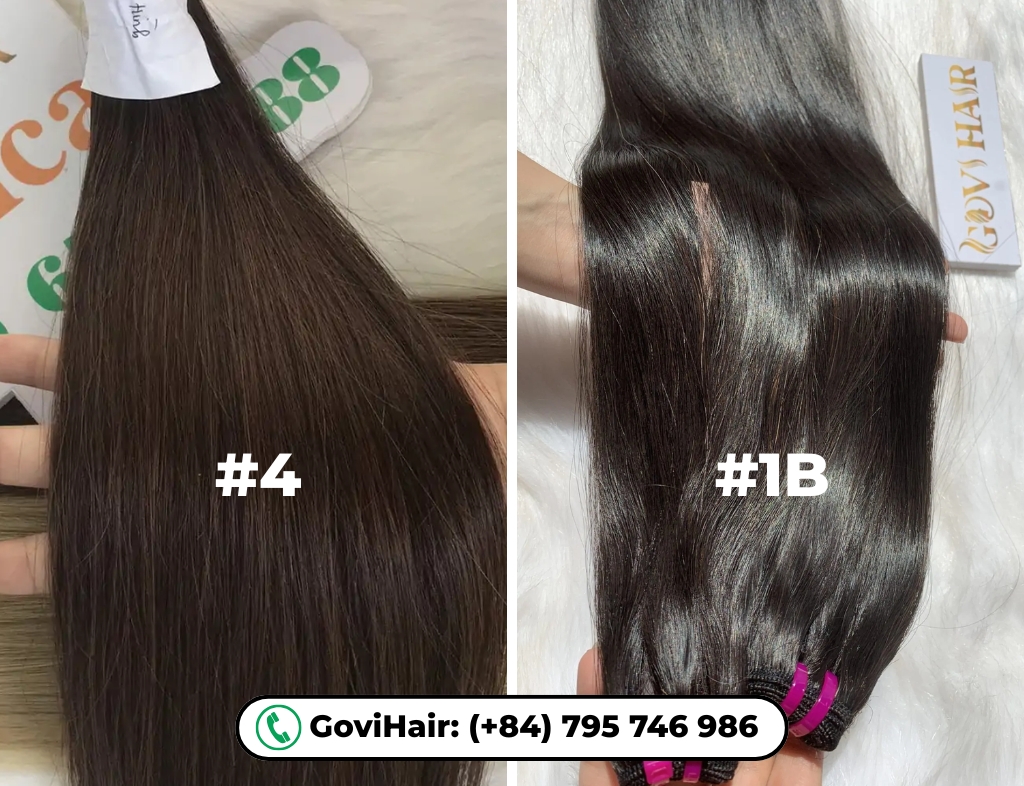
Color 4, on the other hand, is a medium brown that introduces more warmth and lightness into your hairstyle. It’s significantly lighter than 1B, with warm red or golden undertones that stand out more prominently under natural light. Because of this contrast, color 4 is often used to add dimension or highlights to darker hair.
Together, 1B and 4 can create beautifully blended looks, especially in ombré or balayage styles, where the roots remain dark and gradually transition into a medium brown. This combination is also popular in box braids, passion twists, and layered wigs for clients who want movement, softness, and a natural gradient effect.
If you’re considering mixing the two, make sure your base (usually 1B) is dominant and use color 4 as an accent or highlight. This will keep the style balanced and natural while giving it more visual interest and personality.
What About 1B Hair Color Braids?
1B is the most common choice for braiding hair because it looks natural and clean without appearing too artificial. You can use it solo or mix it with other shades for a highlighted look.

Popular braid styles using 1B:
- Knotless box braids
- Fulani braids
- Passion twists
- Jumbo box braids
- Senegalese twists
Many women pair 1B with color 30 or 27 for contrast and depth. For example, 1B/30 hair color is a popular combo with dark roots and caramel highlights.
3 Key Factors To Consider To Choose The Right Hair Color
Consider Your Natural Hair Shade
When choosing a hair color, matching it to your natural hair shade is often the best approach for a seamless look. If your natural hair is jet black, color 1 or 1B will give you the most natural blend. On the other hand, if your hair leans toward medium brown, color 4 will provide the best match. Dark brown hair types may find that 1B or color 2 suits them well. Always start by identifying the tone and depth of your natural hair to guide your decision.
Consider Your Skin Tone
Your skin tone plays a big role in how different hair colors will look on you. For warm skin tones, warmer shades like color 4 or 2 work beautifully as they enhance the natural warmth in your complexion. Conversely, if you have cool skin tones, you may want to stick with cooler shades such as 1B or 1 to complement your skin’s undertones. Selecting a hair color that works with your skin tone ensures a harmonious and flattering overall look.

Consider the Look You Want to Achieve
Think about the style and vibe you want to go for. For a natural, understated look, 1B is the best option, giving you a deep yet realistic finish. If you’re looking for something more bold and dramatic, color 1 (jet black) will deliver that sleek, polished finish. For those seeking a softer, sun-kissed look, color 4 adds warmth and dimension without being too light. The right color can transform your overall appearance and help you achieve the perfect style for any occasion.
These three factors: natural hair shade, skin tone, and desired look are essential in choosing the right hair color for you. By considering these aspects, you’ll be able to select a shade that enhances your beauty and matches your personal style.
How to Care for 1B Hair Color
Whether you’re wearing a 1B human hair wig or extensions, care is key to preserving the natural luster and softness of the hair.
- Use sulfate-free shampoos to prevent dryness.
- Deep condition weekly to maintain moisture and softness.
- Air dry or low-heat style to prevent heat damage.
- Detangle with a wide-tooth comb, especially for curly 1B textures.
- Store wigs or bundles on a mannequin head or in a silk bag.
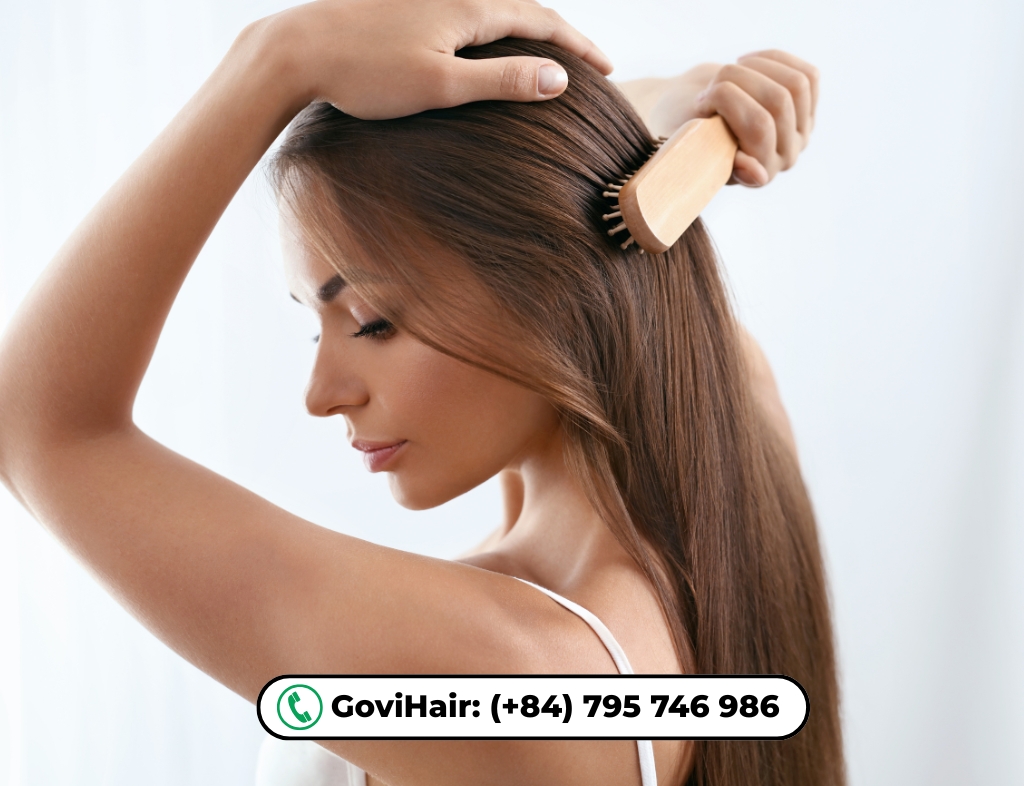
Even if it’s natural black, 1B hair still needs hydration and gentle care, especially if it’s human hair.
Conclusion
Choosing the right black hair shade might seem like a small decision, but the impact it makes on your overall look is huge. With this guide, you now know the key differences between 1, 1B, and 2 hair color, how to choose wisely, and how to care for your hair for long-lasting beauty.
Whether you’re getting braids, sew-ins, clip-ins, or wigs, don’t overlook this small detail, it makes all the difference between a flawless blend and a visible mismatch.
To summarize 1 hair color, 1b, 2 and 4 hair color: what is the difference and how to choose?
| Feature | 1 Hair Color | 1B Hair Color | 2 Hair Color | 4 Hair Color |
| Shade | Jet Black | Natural Black | Dark Brown | Medium Brown |
| Tone | Cool/Blue | Neutral/Brown | Warm Brown/Red | Warm/Golden |
| Best For | Bold, Dramatic Styles | Natural, Seamless Styles | Soft, Warm Looks | Sun-Kissed, Soft Looks |
| Style | Sleek, Polished | Everyday, Natural | Subtle, Elegant | Highlighted/Dimensional |
| Natural Hair | Typically dyed black, not natural. | Closest match for naturally black hair, ideal for blending with unprocessed roots. | Best for naturally dark brown hair. | Perfect for natural medium brown hair, adds warmth and dimension. |
Whether you’ve already chosen your perfect hair color or are still exploring the best match for your style, GoviHair is here to guide you every step of the way. We don’t just offer high-quality products, we’re dedicated to helping you boost your confidence and achieve the look you desire. Let GoviHair support your hair journey with our expertise and premium products tailored to fit your needs.
Text or call us now:
- WhatsApp: (+84) 795 746 986
- Instagram: @govihair_factory
- Facebook: Govihair – Wholesale Supplier









 Ms. Victoria
Ms. Victoria